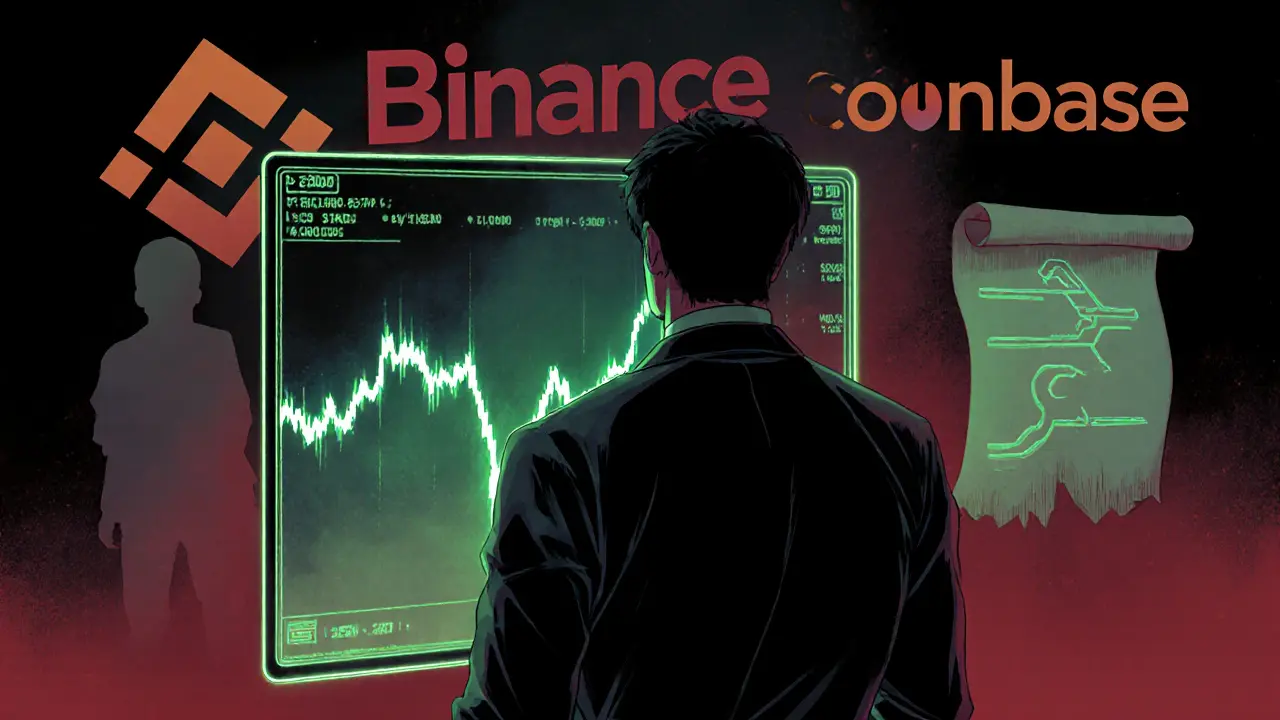W Coin Cross-Border Payment Calculator
Send WCO Across Borders
W Coin (ticker: WCO) is a cryptocurrency token that aims to simplify fast, low‑cost cross‑border payments using a hybrid blockchain called W Chain. The token first appeared under the name WTK before rebranding to WCO, and as of October2025 it trades on several major exchanges such as Binance and Coinbase.
- Hybrid consensus blends Proof‑of‑Stake, BLS signatures, and Round Robin proposer selection.
- Circulating supply figures differ: about 6.5billion on CoinMarketCap versus 2.9billion on CoinGecko.
- Price volatility is high, with 24‑hour swings of up to ±14%.
- Primary use case is rapid, secure international money transfers.
- Analysts flag liquidity gaps and lack of a public whitepaper as red flags.
What is W Coin (WCO)?
When you hear W Coin (WCO) is a cryptocurrency token built on the W Chain blockchain. It was launched by an unnamed development team and later rebranded from the original WTK label. The token’s main promise is to combine the transparency of a public ledger with the speed of a private‑chain payment system.
The token exists on multiple smart‑contract platforms, including Ethereum (Ethereum) and Binance Smart Chain (BSC). Its primary contract address on Ethereum is 0xEdB8008031141024d50cA2839A607B2f82C1c045, while a BSC version lives at 0x55692ad567a020fe91609ffb8da5f6fae250dbf8. These multiple deployments aim to increase accessibility, but they also add to the confusion around total supply.
The W Chain Blockchain - Tech Overview
W Chain uses a hybrid consensus engine that mixes three distinct mechanisms:
- Proof‑of‑Stake (PoS) to reward validators who lock up WCO as collateral.
- Boneh‑Lynn‑Shacham (BLS) signatures for aggregated verification, cutting down on bandwidth.
- Round Robin block proposer selection to rotate block‑creation rights among eligible validators, improving fairness.
This blend is designed to keep energy consumption low-far below traditional proof‑of‑work chains-while still delivering sub‑second finality for transactions. In practice, the hybrid model lets W Chain act like a public network for auditability, yet behave like a private payment rail when speed matters.
Token Economics and Supply Data
Supply numbers are a sticking point. According to CoinMarketCap, there are roughly 6.5billion WCO in circulation, whereas CoinGecko reports only 2.9billion. The maximum token supply has never been publicly disclosed, which makes it harder for investors to estimate inflation risk.
Because the token lives on several blockchains, each chain maintains its own ledger of minted coins. That design choice improves reach but also means total supply figures must be aggregated manually, a process that can introduce errors. Until the team releases an audited supply report, the inconsistent numbers will remain a source of caution for potential holders.

Market Performance and Exchange Listings
W Coin trades on a handful of well‑known platforms. Binance lists WCO under the pair WCO/USDT, while HitBTC and Coinbase also offer limited liquidity. The token’s market cap hovers around $4.8million (per CoinGecko), placing it well outside the top 1% of cryptos.
Price action in October2025 shows a narrow band between $0.000749 and $0.000876, with analysts at 3Commas flagging resistance near $0.000965 and support around $0.000671. A weekly projection from WalletInvestor suggests a modest upside to $0.001035, but the forecast also notes a potential 10% decline in the same period.
How W Coin is Used for Cross‑Border Payments
The primary utility of W Coin is to enable rapid, low‑fee transfers across borders. By leveraging the hybrid architecture of W Chain, a sender can move funds from one country to another in seconds, with transaction fees often measured in fractions of a cent. The token’s design removes the need for intermediaries such as correspondent banks, which traditionally add days and hefty fees to international remittances.
In practice, a merchant or individual would first acquire WCO on an exchange, then move the coins to a compatible wallet that supports the W Chain network. Once on‑chain, the payment is confirmed almost instantly, and the receiver can convert the coins back to a local fiat via a partnered exchange or an over‑the‑counter service. Although the workflow sounds simple, real‑world adoption remains limited because only a few payment gateways have announced official support for WCO.
Risks and Criticisms
Several red flags keep analysts cautious. The most visible issue is liquidity: trading volume on Binance averages between $148k and $257k per day, which can cause price slippage for larger orders. Additionally, the team has not published a comprehensive whitepaper or roadmap, making it difficult to gauge long‑term development milestones.
Supply ambiguity adds another layer of risk. Without a clear maximum supply, investors cannot calculate dilution scenarios confidently. Community sentiment is also thin; social platforms show sparse discussion, and there are no official developer forums, which hampers transparency.

W Coin vs. Other Payment‑Focused Cryptos
| Feature | W Coin (WCO) | Stellar (XLM) | Ripple (XRP) |
|---|---|---|---|
| Consensus Mechanism | Hybrid PoS + BLS + Round Robin | Stellar Consensus Protocol (SCP) | Ripple Consensus Ledger (RCL) |
| Transaction Finality | Sub‑second | 3‑5 seconds | ~4 seconds |
| Market Cap (Oct2025) | ~$4.8M | ~$7.2B | ~$21.5B |
| Liquidity (24h Volume) | $150‑250k | $1.2B | $3.8B |
| Supply Transparency | Unclear max supply | Fixed 50B | Fixed 100B |
| Adoption in Payments | Niche, limited gateways | Broad, many partners | Broad, banking focus |
From the table you can see that W Coin trails behind Stellar and Ripple in market depth and adoption. Its hybrid consensus does give it an edge in energy efficiency, but the trade‑off is a smaller ecosystem and higher price volatility.
Future Outlook and What to Watch
Analysts agree that the next 12months will be decisive for W Coin. Key milestones to monitor include:
- Official roadmap release or whitepaper publication.
- Integration with at least one major payment gateway or fintech platform.
- Liquidity improvements on Binance or the addition of a market‑making partner.
- Clear disclosure of maximum token supply and audit of circulating numbers.
If any of these items materialize, the token could attract more institutional interest and potentially stabilize its price. Conversely, continued opacity and low usage would likely keep WCO stuck in the high‑risk, low‑cap corner of the crypto market.
Frequently Asked Questions
What blockchains does W Coin operate on?
W Coin is deployed on Ethereum, Binance Smart Chain, and the native W Chain network. Each deployment uses its own contract address, but the token’s functionality is intended to be identical across chains.
How does the hybrid consensus improve transaction speed?
By combining PoS staking with BLS signature aggregation, validators can confirm a block with a single cryptographic proof. The Round Robin proposer rotation ensures no single validator stalls the network, letting transactions settle in under a second.
Is W Coin a good long‑term investment?
It carries high risk. The token’s low market cap, unclear supply, and limited adoption mean price swings are common. Investors should only allocate money they can afford to lose and keep an eye on liquidity and roadmap updates.
Can I use W Coin for everyday purchases?
At present, only a few niche merchants accept WCO. The token’s primary value lies in fast cross‑border transfers, not retail checkout. Adoption may improve if payment gateway integrations are announced.
Where can I see real‑time price data for W Coin?
Websites like CoinMarketCap and CoinGecko provide live price charts, volume stats, and circulating supply figures for WCO.








Scott Hall
October 13, 2025 AT 02:20WCO aims to cut cross‑border fees by using its own blockchain layer.
Its fast settlement could be a game‑changer for remittances.
Laura Myers
October 20, 2025 AT 09:11WCO’s underlying tech is a directed acyclic graph that sidesteps traditional mining.
By eliminating block rewards, the protocol claims to keep transaction costs near zero.
The network’s consensus relies on stake‑weighted voting, which some purists call a hybrid PoS model.
Because there’s no need for massive hash power, energy consumption plummets to a fraction of Bitcoin’s footprint.
The whitepaper also mentions adaptive sharding, which should boost throughput as demand rises.
In practice, the testnet has been handling upward of 5,000 transactions per second, a figure that dwarfs most legacy systems.
One of the standout features is instant finality – you don’t wait for confirmations the way you do on Ethereum.
The developers have built an SDK that lets merchants embed WCO payment widgets with a few lines of code.
Regulatory compliance is tackled via on‑chain identity layers, which could appease AML auditors.
Critics argue that the governance model is too centralized around a handful of founding nodes.
Nonetheless, the roadmap promises a decentralized validator pool by Q4 2026.
If the token economics hold, the circulating supply will be capped at 1 billion with a modest inflation schedule.
Market analysts are already pricing WCO at a modest multiple of its current price, citing its niche in cross‑border transfers.
Investors should watch the upcoming partnership with a major fintech hub in Southeast Asia, which could drive real‑world usage.
All in all, the project blends hype with genuine technical depth, making it worth a closer look.
Helen Fitzgerald
October 27, 2025 AT 13:16WCO positions itself as a bridge for freelancers moving money across continents.
Its low‑fee model could help digital nomads keep more of their earnings.
Jon Asher
November 3, 2025 AT 22:54Exactly, the simplicity of the UI makes it accessible even for non‑techies.
Plus the instant settlement feels like sending an email rather than waiting for a bank transfer.
Ben Parker
November 11, 2025 AT 08:32Yo, WCO looks slick 😎
Those sub‑second times are wild!
Daron Stenvold
November 18, 2025 AT 18:10While the marketing hype is palpable, the protocol’s formal specifications do outline deterministic finality.
This could address concerns about double‑spending in high‑value corridors.
hrishchika Kumar
November 26, 2025 AT 03:48From a cultural standpoint, WCO’s multi‑currency support acknowledges the diverse cash flows of emerging markets.
The token’s branding even taps into regional motifs, which may foster community adoption.
Nina Hall
December 3, 2025 AT 13:26Love the colorful approach – it feels like the project wants to celebrate global diversity rather than impose a one‑size‑fits‑all solution.
That kind of inclusive vibe can be a strong differentiator.
Lena Vega
December 10, 2025 AT 23:05WCO’s fees are basically zero.